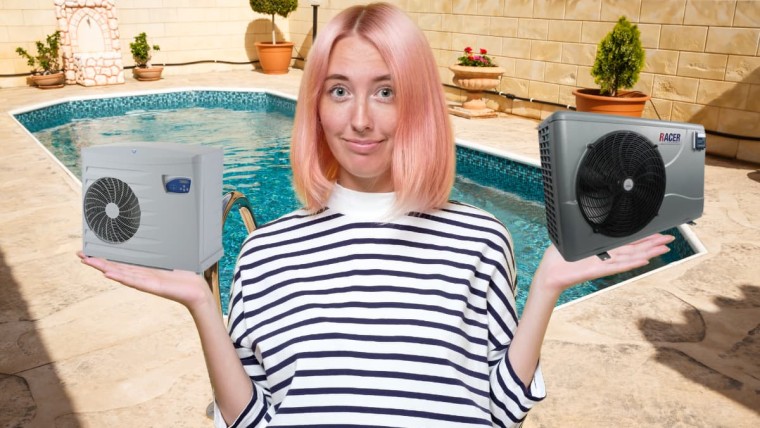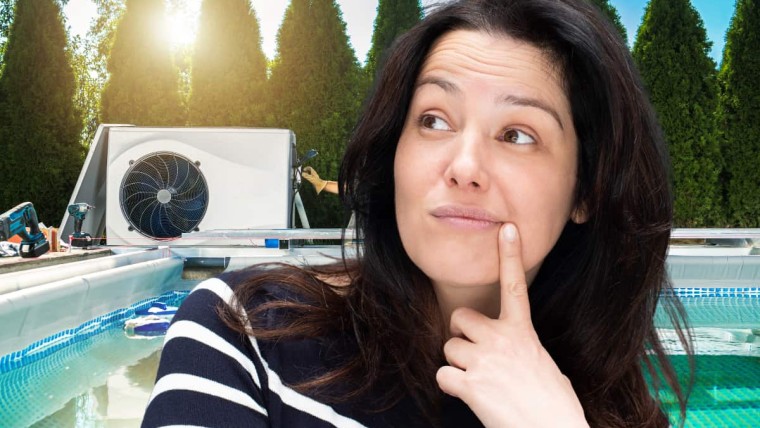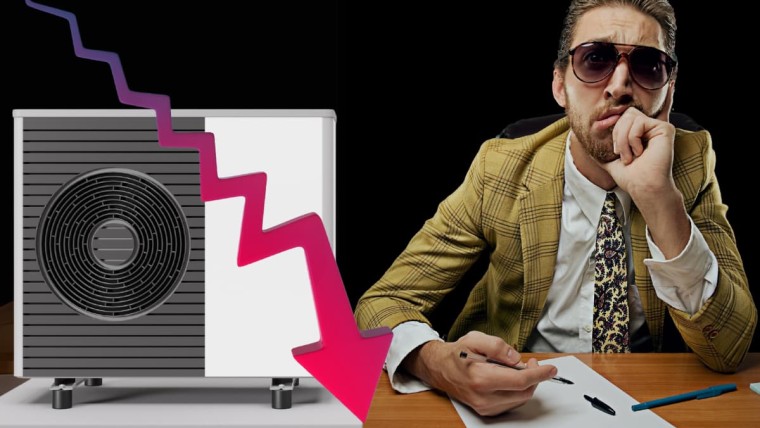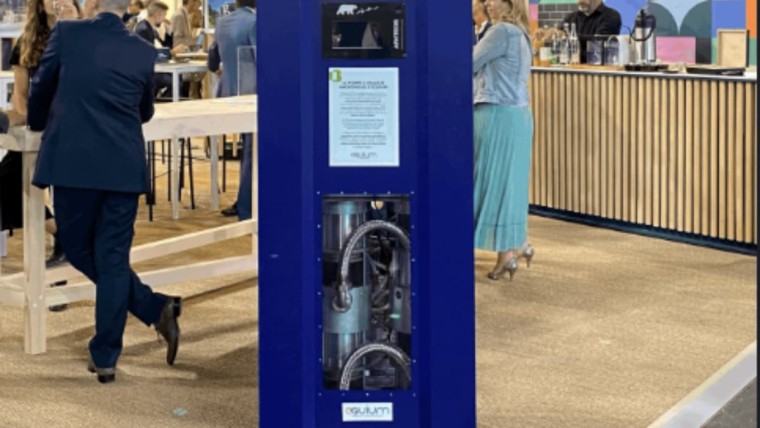Today, I'd like to answer a question you're probably asking yourself if you're looking for a heat pump to replace your fossil fuel or electric heating? You're probably interested in calculating the energy consumption of your future heat pump, and whether or not it will be cost-effective. So you're wondering how long it will run per day.
On the other hand, if you're considering the purchase of a PAC Air Eau, you may have some hesitation about where to place your outdoor unit in the garden, and would prefer to know first how long it will be on during the day in order to decide on the best location.
In this article, we'll review how a heat pump works, discuss the key factors that influence how long a heat pump will run during the day, and give a few tips on how to optimize this daily running time.
How long does a heat pump run per day? On average, a heat pump can run between 6 and 8 hours a day. But this depends on a number of factors, including its size, the outside temperature, the house's insulation and the household's energy needs.
Heat pump operating principles
The different types of PAC
Before going any further, let's take a look at the different types of heat pumps. Each one is different, and the length of time they run per day can vary accordingly. But they're all based on the same basic principle: capturing calories from a "free" source in the environment, and transferring them to the medium that carries the heat into the home.
The air-to-air heat pump
Otherwise known as reversible air-conditioning, it captures calories from the outside air, thanks to an outdoor unit containing an evaporator and the necessary refrigerant circuit. These calories, hot or cold, are captured in the refrigerant fluid, which transports them to the condenser, where condensation (or evaporation, in the case of air-conditioning) takes place. The heat is then returned to the air in the room. This type of heat pump is most commonly used for air-conditioning in offices or homes, and as a replacement for electric heating, since there's no need to install radiators.
The air water heat pump
The air-to-water heat pump is the most widespread because it's the easiest to install, and very popular when replacing fossil-fuel heating systems. It captures heat in the same way as its air-to-air cousin, from the outside air. It then distributes them to the water in the home's heating network, in the same way. Subject to numerous subsidies in most countries, it is currently the market leader. It's ideal for replacing oil, gas or pure electric boilers.
The geothermal heat pump
Somewhat more luxurious, because more expensive, the geothermal heat pump collects calories in the ground via vertical or horizontal probes in which circulates an antifreeze fluid that establishes a heat exchange with the ground. The heat is then transferred to the water in the house. Perfect for replacing fossil-fuel heating systems, it is also eligible for substantial subsidies. However, it is more complex to install because of the drilling required, which is not a benign operation for your garden. Its COP or coefficient of performance is one of the highest.
The water-to-water heat pump
Following the same principle as the previous model, it captures calories from a water source such as a lake, river or groundwater. As these natural elements are not readily available close to a home, it is less widespread. But it does have its advantages. Its COP is the highest, reaching 6 or 7, giving it the best energy savings of all its cousins.
The refrigeration cycle
To understand the principle of the heat pump, it's important to remember that it's based on the refrigerant circuit, which itself contains 4 essential elements:
The compressor compresses the refrigerant, increasing its temperature and pressure.
The condenser Heat exchanger: enables the refrigerant to transfer the heat contained in the calories to the water or air in the home.
The regulator : Lowers refrigerant pressure and temperature before passing through the evaporator
The evaporator Evaporation: allows heat to be extracted from the environment (air, water, soil) and transferred to the fluid, which then becomes vapor (evaporation is an endothermic reaction and therefore absorbs heat from its environment, unlike condensation, which is exothermic).
What factors influence the running time of the heat pump during the day?
How long a heat pump runs per day is not a fixed figure that can be stated with certainty. It depends on too many factors, including the size of the heat pump, outdoor temperature, insulation and the needs of the household concerned.
The size of the heat pump
It's all a question of sizing. A heat pump that is too small will take longer to reach the desired temperature. A heat pump that's too large will tend to run intermittently, switching on and off frequently, which can reduce its efficiency and lifespan. The right installer will be able to offer you the perfect sizing.
The outside temperature
Of course, the heat pump runs longer in winter than in mid-season or in summer, when it's not supposed to be running at all, except perhaps in mountainous regions. The colder it is, the harder the heat pump has to work to extract calories from the air and reach the desired temperature setting. And when it's warmer, it's the opposite.
Insulation of the house
A properly insulated house retains the heat extracted from the environment for longer, and therefore means that the heat pump runs for less time during the day.
Poor insulation, on the other hand, has the opposite effect, requiring the heat pump to produce new calories more often than not, leaving it running at maximum output all day long.
That's why it's best to avoid installing heat pumps in old buildings, unless you're an eco-offender and want to make a profit from customers who aren't too careful or well-informed. Which is not the case for you now that you've read this article.
Energy needs of the household
If you're a couple with no children, and you work all day, your energy requirements are much lower than those of a couple with two children, where one of the parents stays at home to look after the children. All the more so if your heat pump supplies domestic hot water. So you need to take your family's habits into account to get a good idea.
Heating only or Heating + Domestic Hot Water?
Your heat pump heating system also plays a major role. In fact, if you've chosen to produce your domestic hot water directly via your heat pump, rather than with a thermodynamic cylinder or a pure electric resistance system, then your heat pump will run a little harder every day to ensure that the DHW temperature in the cylinder is maintained. You also need to periodically heat the DHW cylinder to over 65°C to kill the bacteria that cause Legionnaires' disease. The heat pump will run between 10 and 15% more if you use it to produce domestic hot water, compared with the option where you only provide heating. And if your family consumes a lot of hot water, this figure could go even higher.
Typically, at altitudes below 800 metres, we consider 2000 hours of operation per year for heating alone, and 2300 hours for heating + hot water.
Setting the indoor temperature
Are you thrifty types who don't hesitate to pull out the sweater to get over 18-19°C in the living room? Then, logically, your heat pump will run for less time than that of a family who likes to have a good time with temperatures of 25°C and more in the living room! (We'll call them eco-delinquents :)) It's the same logic in summer if your heat pump acts as an air-conditioner, and you like to be cold like in the hotels of Dubai! Your heat pump will run much more.
In short, you've understood the logic. These 5 criteria are highly dependent on your habits and needs, and have a major impact on how long a heat pump runs during the day, and therefore on its electricity consumption.
How long does a heat pump run per day in detail?
Estimated average operating time for a heat pump
It's tricky to estimate how long this will be, as it depends so much on your personal situation. But it is estimated that, on average, a heat pump runs for 6-10 hours a day. This fits in well with an estimate of 2000 hours of operation per year, if we consider that the heat pump runs during the 8 coldest months, around 8 hours a day. In fact: 8 * 30 *8 = 1920 hours, almost 2000 hours. If you're making hot water, count on a little more.
Here's a table based on the different cases: it's a rough, average estimate based on the assumption that we're on the plains (altitude below 800m), and that we shoot for 8 months a year. From October to May.
| Heating only | Heating + Hot water | |
| Less than 800m of altitude | 2000 hours per year 8h20 per day | 2300 hours per year 9h30 per day |
| More than 800m of altitude | 2300 hours per year 9h30 per day | 2500 hours per year 10h30 per day |
Seasonal variation
Of course, in winter, there's an upward variation in these estimates of how long a heat pump will run per day. Whereas in mid-season, these estimates are a little too high. We take the average.
Autumn is spring
This period is known as mid-season, and the demand for heating or air conditioning is often lower, due to milder temperatures. The heat pump will run for a shorter period, depending on the ambient temperature you require.
Winter
Demand is at a maximum due to the harsher climate. Depending on your habits, the heat pump will run longer to meet your comfort requirements.
Summer
No heating, unless you live in a region worthy of Lake Baikal. But you still need hot water for comfort. So the heat pump will run at a minimum, unless it's used for heating only. What's more, you may have opted for a reversible heat pump that provides air conditioning, in which case it will run even in summer, more or less long depending on your set cooling temperature.
How can I optimize the running time of my heat pump so that it runs less during the day?
Let's take a brief look at the levers at your disposal to influence how long your heat pump runs during the day.
Sizing
The right size of heat pump will avoid unpleasant surprises on many levels, whether in terms of power consumption, noise, or running time during the day. In fact, the right size will enable you to have a heat pump that runs for a reasonable 8 hours a day or less, depending on your habits. But a heat pump that's too small will quickly satellite this value, degrading the equipment and draining your wallet. Always ask your installer for a sizing report, and have it checked by an expert if in doubt.
Improving home insulation
It goes without saying that better insulation will enable you to install a smaller heat pump in the first instance, so it's cheaper and uses less electricity. What's more, your home will retain heat for longer, reducing the heat pump's running time.
Using a programmable thermostat
For optimum indoor temperature control, you can use a programmable thermostat to indicate your living habits, so that the heat pump doesn't run for nothing. When you're away, you can lower the room temperature automatically or remotely, and raise it again 1 hour before you arrive, for example. It's a well-known fact that home automation saves energy.
Maintenance of the CAP
Finally, regular maintenance - at least every two years, if not every year if possible - will prevent the filters from clogging up, causing the heat pump to run longer for nothing. This will enable us to check the fluid level, which, if too low or leaking, will mean the heat pump running longer per day to deliver the same power.

Julien G.
Juliena mechanical engineering graduate and specialist in climate engineering since 2009, has become a writer specializing in renewable energies, with expertise in heat pumps and photovoltaic solar panels for individual housing.
See all articles by this author






